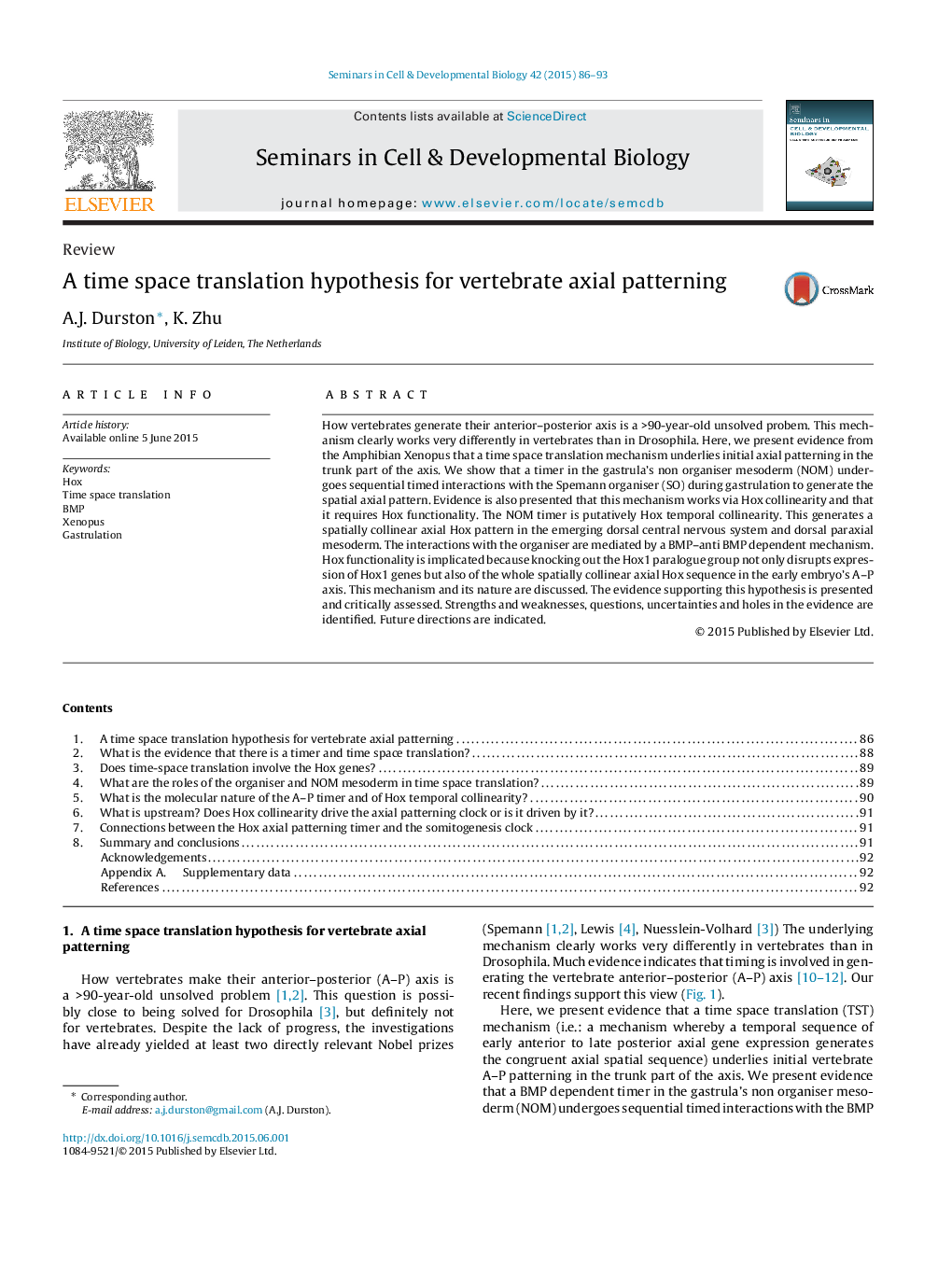| کد مقاله | کد نشریه | سال انتشار | مقاله انگلیسی | نسخه تمام متن |
|---|---|---|---|---|
| 2202564 | 1551380 | 2015 | 8 صفحه PDF | دانلود رایگان |
How vertebrates generate their anterior–posterior axis is a >90-year-old unsolved probem. This mechanism clearly works very differently in vertebrates than in Drosophila. Here, we present evidence from the Amphibian Xenopus that a time space translation mechanism underlies initial axial patterning in the trunk part of the axis. We show that a timer in the gastrula's non organiser mesoderm (NOM) undergoes sequential timed interactions with the Spemann organiser (SO) during gastrulation to generate the spatial axial pattern. Evidence is also presented that this mechanism works via Hox collinearity and that it requires Hox functionality. The NOM timer is putatively Hox temporal collinearity. This generates a spatially collinear axial Hox pattern in the emerging dorsal central nervous system and dorsal paraxial mesoderm. The interactions with the organiser are mediated by a BMP–anti BMP dependent mechanism. Hox functionality is implicated because knocking out the Hox1 paralogue group not only disrupts expression of Hox1 genes but also of the whole spatially collinear axial Hox sequence in the early embryo's A–P axis. This mechanism and its nature are discussed. The evidence supporting this hypothesis is presented and critically assessed. Strengths and weaknesses, questions, uncertainties and holes in the evidence are identified. Future directions are indicated.
Journal: Seminars in Cell & Developmental Biology - Volume 42, June 2015, Pages 86–93
